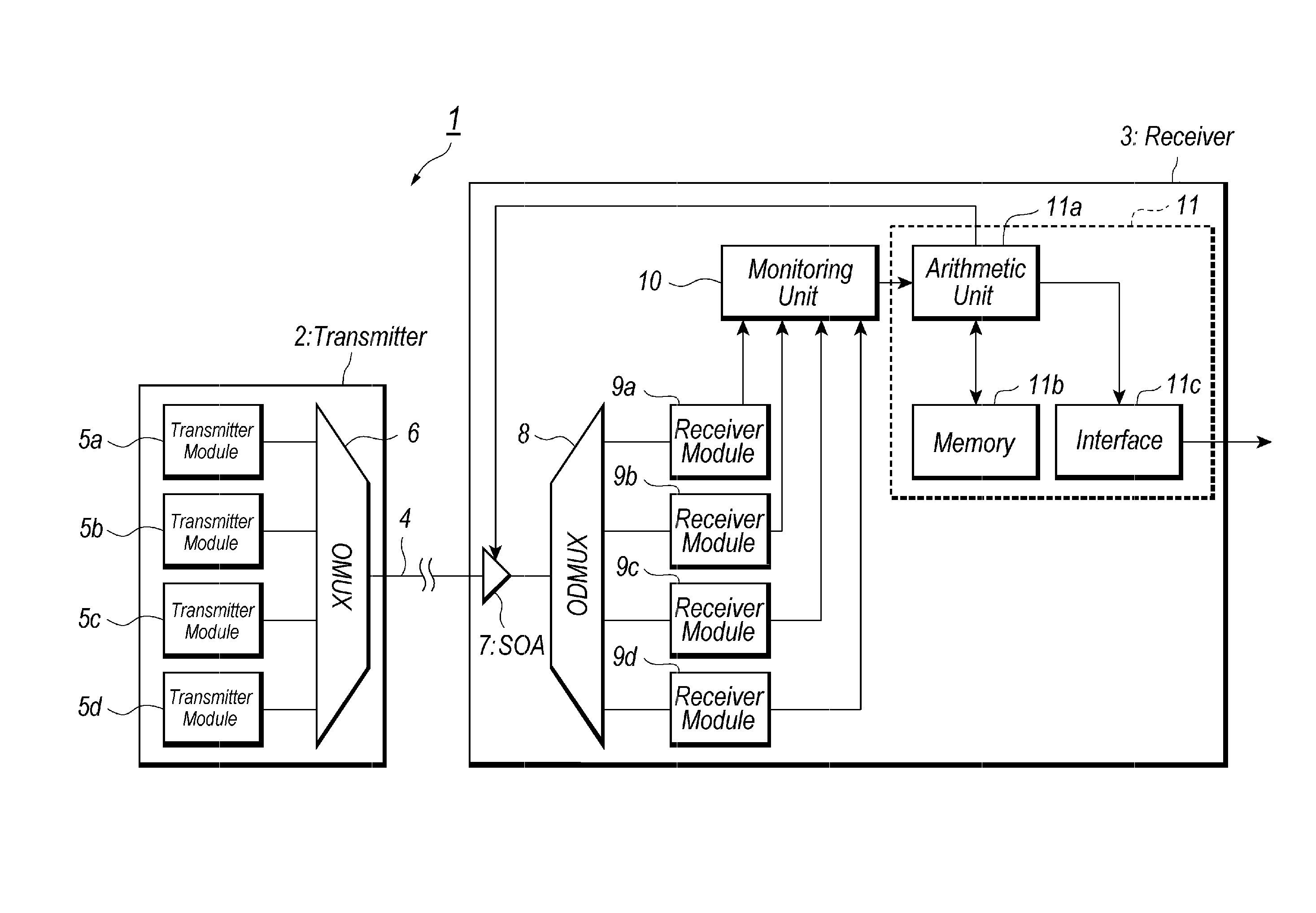Optical receiver for the WDM system and method to control the same
a technology of optical receiver and optical input level, applied in multiplex communication, semiconductor lasers, electromagnetical repeaters, etc., can solve the problems of large size and complicated optical input level, and achieve the effect of compact size and stable control of optical input level
- Summary
- Abstract
- Description
- Claims
- Application Information
AI Technical Summary
Benefits of technology
Problems solved by technology
Method used
Image
Examples
Embodiment Construction
[0024]Next, preferred embodiments according to the present invention will be described in detail as referring to accompanying drawings. In the description of the drawings, the same numerals and symbols will refer to the same elements without overlapping explanations.
[0025]FIG. 1 illustrates a block diagram of an optical communication system according to an embodiment of the present invention, which installs an optical receiver with a function of the four wavelengths multiplexing. The optical communication system 1 shown in FIG. 1 comprises the optical transmitter 2 with the function of the four wavelengths multiplexing, the optical receiver 3 with the function of the four wavelengths de-multiplexing, and an optical medium 4 made of a single mode fiber (SMF) provided between the optical transmitter 2 and the optical receiver 3.
[0026]The optical transmitter 2 outputs multiplexed signal light to the optical medium 4. The multiplexed signal light includes four distinct optical signals e...
PUM
 Login to View More
Login to View More Abstract
Description
Claims
Application Information
 Login to View More
Login to View More - R&D
- Intellectual Property
- Life Sciences
- Materials
- Tech Scout
- Unparalleled Data Quality
- Higher Quality Content
- 60% Fewer Hallucinations
Browse by: Latest US Patents, China's latest patents, Technical Efficacy Thesaurus, Application Domain, Technology Topic, Popular Technical Reports.
© 2025 PatSnap. All rights reserved.Legal|Privacy policy|Modern Slavery Act Transparency Statement|Sitemap|About US| Contact US: help@patsnap.com



